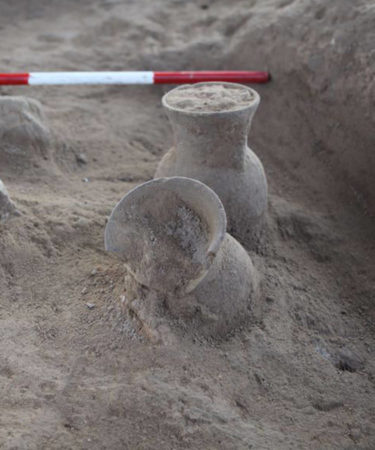Researchers have discovered some of the earliest chemical evidence of beer in 2,500-year-old clay drinking vessels in northern Iraq. The ceramic cups, excavated in Khani Masi, contain the oldest evidence of beer in Mesopotamia, showing the “chemical signature” of fermentation as well as of barley.
“Putting those together is the interpretation that this is barley beer,” Claudia Glatz, a senior lecturer in archaeology at the University of Glasgow, and a coauthor of the study published in the Journal of Archaeological Science, said.
Glatz is working with Elsa Perruchini, a PhD archaeology student and the lead author of the study. Perruchini has implemented a new, “likely groundbreaking” technique to detect beer residues while avoiding contamination from modern compounds. (Sunscreen is a common culprit, the report says.)
The excavated section in Khani Masi dates back to the late Bronze Age (1415 B.C. to 1290 B.C.). With the newly discovered evidence, archaeologists are working on finding the cultural significance of the beer in Mesopotamian society, particularly its reach during the Babylonian Empire, Smithsonian Magazine reports.
The importance of beer in Mesopotamian society has long been evidenced, such as with the Hymn to Ninkasi, the earliest known text alluding to the making of beer. However, Perruchini’s discovery allows a closer look at the exact recipe the Mesopotamians may have used. In fact, Perruchini and her fellow students are brewing beer using techniques described in the Hymn to Ninkasi alongisde ingredients they believe match up with the residues in the vessels.
(Apparently, the beer is not expected to be very good: “It smells so terrible,” Perruchini says.)
They’re not the first to attempt an ancient brew: German researchers recently tried to reproduce 4,000-year old Hittite beer. Supposedly, theirs was very tasty. Leave it to the Germans to make great beer.
